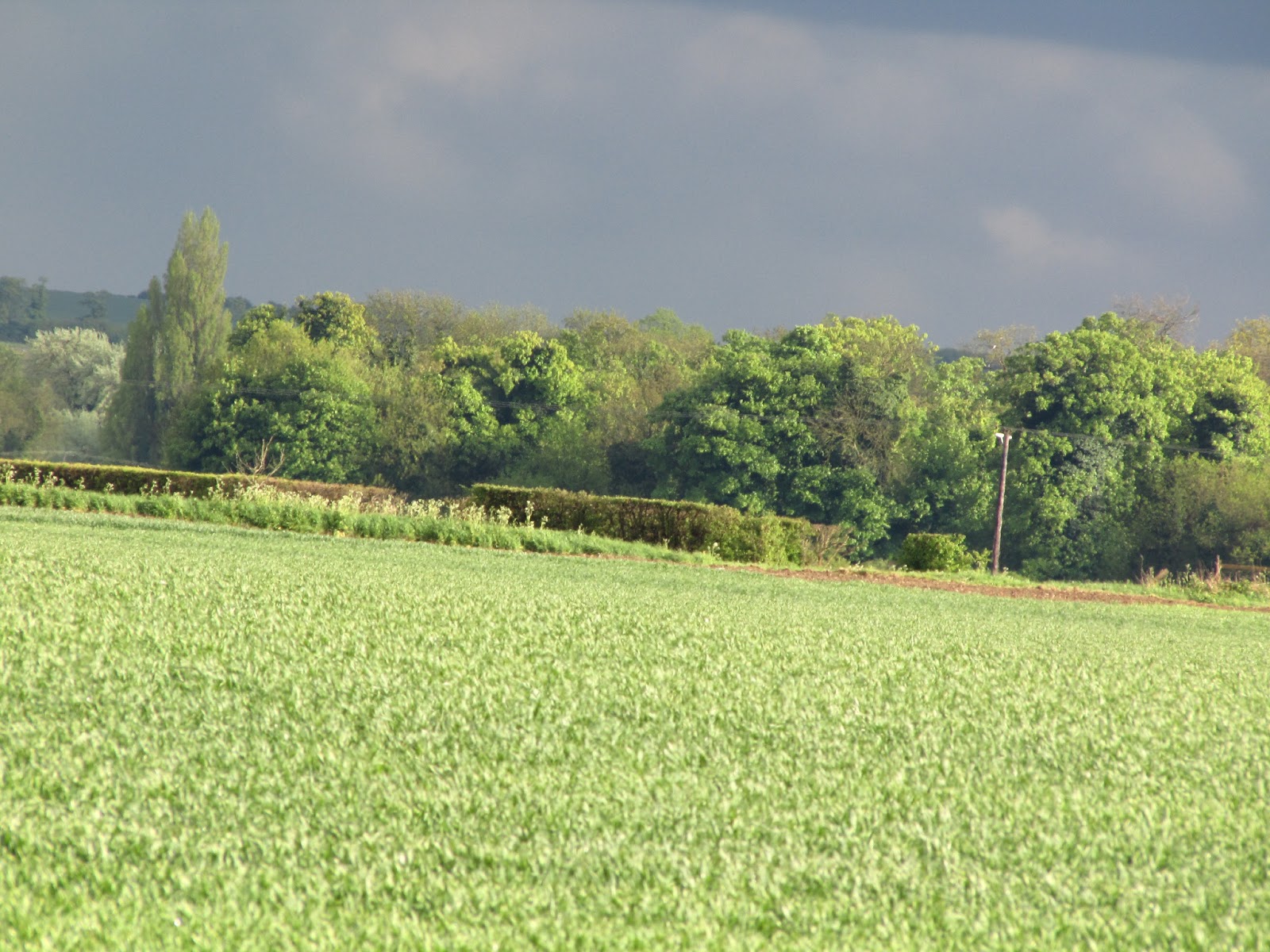Follow The Yellow Brick Road
A footpath across arable fields, stained yellow with herbicide, is still hard as brick despite the weekend's downpours. Saturday's rain washed away dark cloud that had lingered for days but produced a scanty splash. Stormy sunshine seduced me into an evening walk. The dour sky was rinsed clean. I couldn't keep my eyes off the illuminated tree canopies that seem to have transformed the horizon overnight like marquees for a wedding. Swallows skimmed the cow parsley for insects in the wake of my footsteps.
The walk shone a light on the wind-buffeted birds I'd seen on my morning walk. A yellow wagtail was blindingly bright against the indigo sky. I had walked to Stapleford in cloud that morning along a footpath that passes a chain-link fence. Yellow wagtails perched on the concrete posts, keeping a few steps ahead of me. Within a few hundred metres there were corn buntings, linnets, lesser whitethroat, reed bunting, goldfinches, skylarks and swallows. The corn bunting and the whitethroat proclaim a tight territory, always to be found in a particular elder bush. A pair of linnets in the blackthorn chided me. The wagtails appear to be nesting and feeding in the wheat, which is unusual (because it is shorter this nesting season due to the late spring, I'm told, and more to their liking). Beleagured farmers quote the proverb 'the wheat in April should be high enough to hide a hare'. Now, mid-May, it looks as though it's chasing the hare.
 |
| Photos by Jo Sinclair |
The glorious growth spurt will keep me to the footpaths from now on. The radiant landscape will soon be impenetrable with nettles, and fragile with nesting birds. On the other side of the footpath there is rough grassland next to the river, with hedgerows and brambly margins which explains the variety of these rapidly declining farmland species. On field margins and pasture dandelions are going to seed, attracting linnets and goldfinches.

Comments
Post a Comment